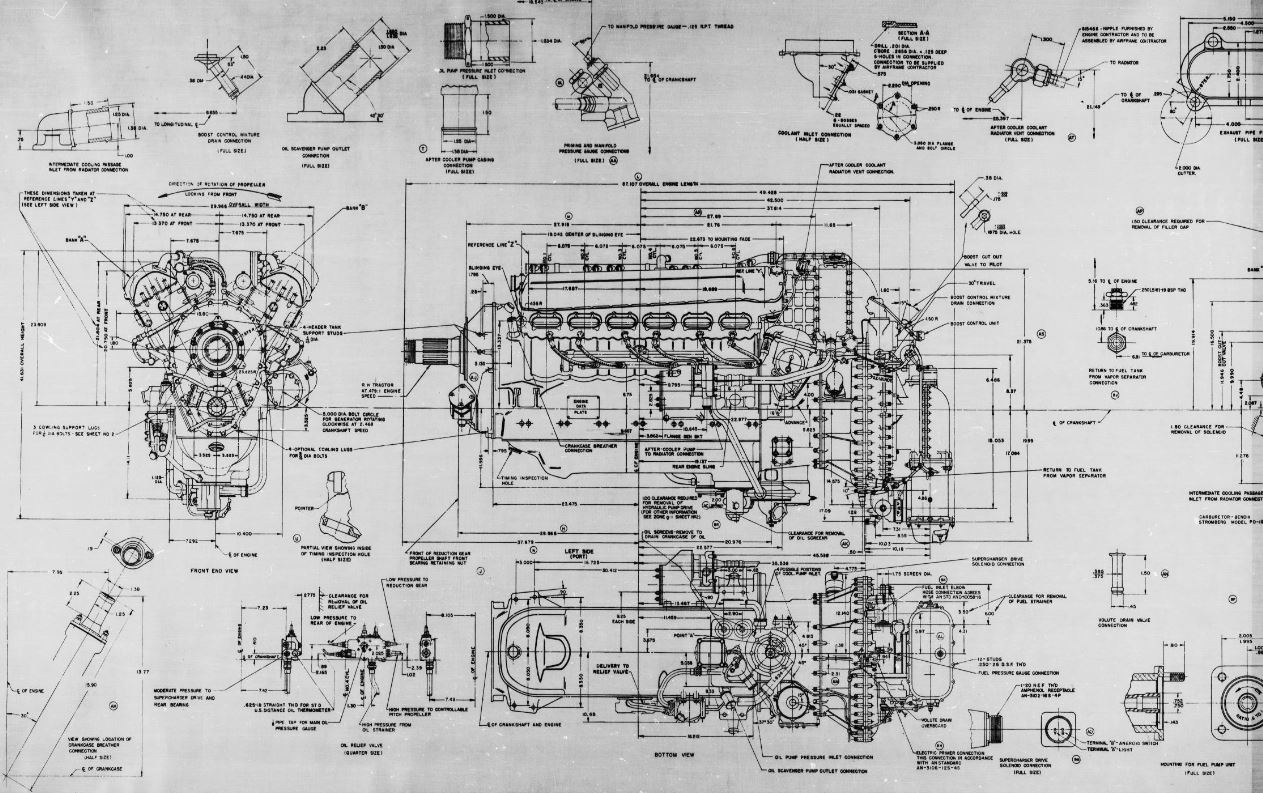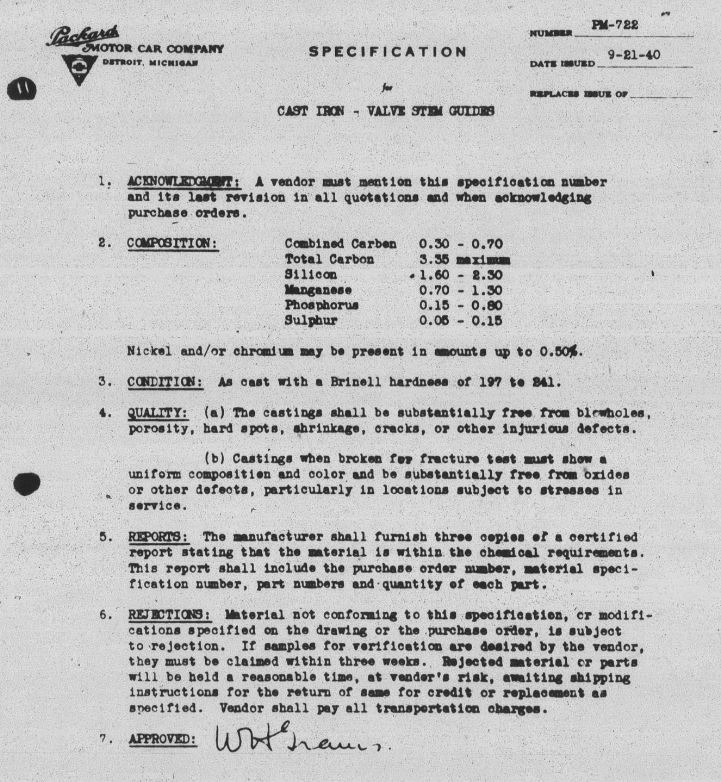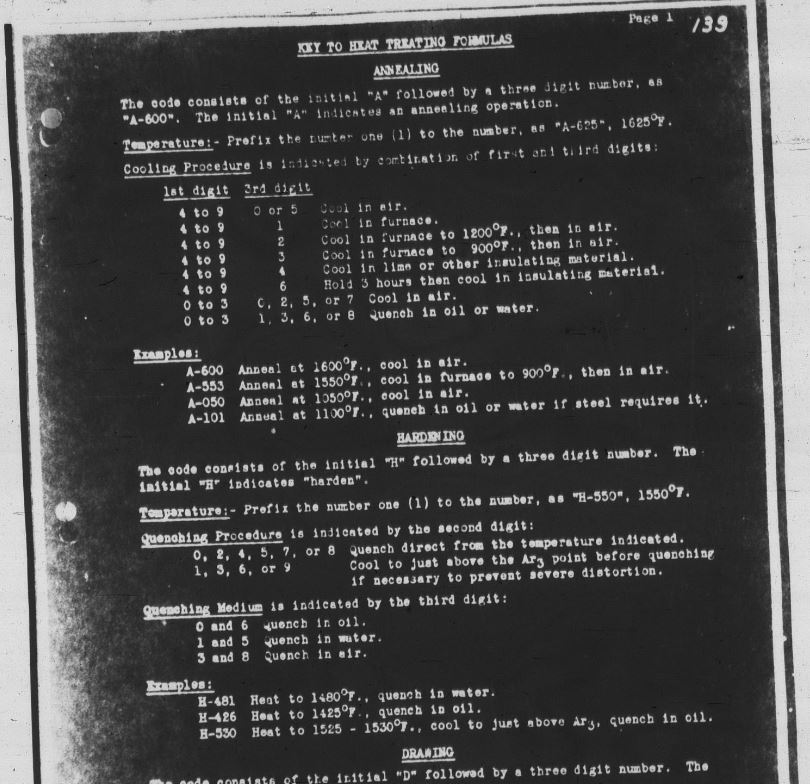100 new Packard Merlin V-1650 Engine specifications have been made available in the last several weeks!
These newly added specifications originally came off of the set of engineering drawings on microfilm for the V-1650 engine. The specs are published by the Packard Motor Car Company who manufactured the V-1650 engine stateside during WWII. However, many of the specs also apply to the Rolls-Royce manufactured Merlin engines. If you are interested in viewing the 10,400 engineering drawings for the V-1650 engine you must become a member of the AirCorps Library site. However, the specifications themselves are available for purchase and download through our non-member store!

An example from drawing #611001 for the installation of the V-1650-3 and -7 engine. Become a member of AirCorps Library to view our complete collection of V-1650 engineering drawings.
Specifications Galore
Specifications are often included on sets of microfilm alongside engineering drawings. However, they are hard to utilize unless they are identified by their report number and title as they cover a wide variety of topics. For this reason exactly I like to extract specifications and other documents from sets of microfilm and convert them into PDFs to make them easier to find on the site. This also allows me to add the document identifier, which in the case of the Packard specs is "PM-" which stands for Process Manual. I also add the full title for each spec, along with the revision date, and any other pertinent keywords associated with the document.
It is common to have a large number of supplemental documents on any given set of microfilm, and the Packard specifications did not disappoint. There were 99 individual specs that cover an incredibly wide variety of fabrication and manufacturing topics. Click here to browse all 99 specs.
What's on these V-1650 Specifications?
Testing, treatments, painting, and composition breakdowns are just a handful of the topics that a spec can cover for an assembly or component. Unlike the installation and overhaul instructions that can be found in most military published manuals, specs set specific parameters for the fabrication work that was required by the manufacturer when the part was being produced. For example, PM-1440 titled "Tumble-Finishing Camshafts" details why tumble finishing is necessary - "To remove sharp edges, burrs, chatter and grinding marks, and to form the specified radius on the lobes of all camshafts." How the camshaft is to be prepared, and the specific process that tumble-finishing requires. The spec details the type of material the camshaft should be tumbled with, how many pounds of it are to be used, and the identifier of each material. Pretty detailed stuff!
While specs rarely contain images, they are an incredibly informative look into the factory work that was being completed during WWII. Reading through them really give you an appreciation for the amount of work and precision that it took to manufacture the parts that were then transferred to the aircraft manufacturer for assembly.
Below are a handful of the specs that I found most interesting while I was going through them. Click the titles to view the preview document, or if you want to read the whole thing without purchasing a download, sign up for an AirCorps Library membership for just $9 per month or $75 per year to do just that!
Painting Engine Parts Gloss Black, PM-1420
Test of Allis-Chalmers Supercharger for Packard V-1650, PM-2021
Aircraft Engine Driven Magnetos - Delco Models S12RAP-4 and S12LAP-4, PM-2003
Key to Heat Treating Formulas - Annealing


